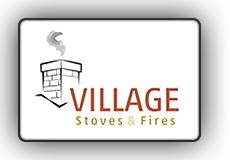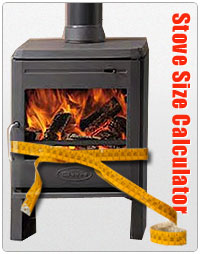HETAS Registered Installers
![]()
In England and Wales, there are two ways to legally install a domestic solid fuel, wood burning stove or multi fuel stove. HETAS registered installers can certify that their work complies with all the relevant building regulations and so can issue the customer with a certificate of compliance. A copy of this certificate is then sent to HETAS who will notify the relevant Local Authority on the customer’s behalf.
It is important to point out that all work effecting stoves, chimneys and flues is strictly governed by building control. Work carried out by an unregistered engineer must be inspected by your local building control officer, this is usually at a considerable extra cost. Any work completed by an unregistered installer could also potentially render any buildings insurance you have void.
By using Village Stoves & Fires you can be assured piece of mind that our installers are all HETAS registered and that your installation is carried out following all required building controls and HETAS guidelines.
Building Regulations Applying To StovesChimney Condition & Suitability
Before installing a new stove the chimney should be inspected to ensure it is structurally sound, clear of obstructions and the correct diameter for the appliance to be used. A smoke test should then be carried out to check for gas tightness at which point it is recommended that the chimney is swept. A chimney found to be leaking must be relined.
Re-lining an existing chimney
A way of relining a chimney would be to use an independently certified flexible metal flue liner, specifically made to suit the types of fuels to be burnt. Remember that a solid fuel stove will use a different liner to a gas stove. Flexible metal flue liners should be installed in one complete length without joints within the chimney.Other suitable materials are listed in the current HETAS guide. If a chimney has been relined in the past using a metal lining system and the appliance is being replaced, the metal liner should also be replaced.
Flue Size
The diameter of any flue used (stove flue pipe, liner or twin wall pipe) must not be smaller than the size recommended by the stove manufacturer - generally the diameter of the stove outlet.If a wood burning stove has a diameter of 125mm (5") then Building Regulations do recommend using a larger 150mm (6") liner, however manufacturers installation instructions do take priority.
Flue Height
Flues should be high enough to ensure sufficient draught to clear the products of combustion. A flue height of 4.5m should create a sufficient draw, although this can be affected by the height of the building, number of bends and wind patterns. Flue height is subject to a number of other calculations.The outlet from a flue should be above the roof of the building in a position where the products of combustion can discharge freely and will not present a fire hazard.
If the roof covering could be easily ignited it is recommended the flue height is increased. A simple rule of thumb would be 1800mm above where it penetrates the roof taking into account other requirements.
Flue to combustible material distances
Single skin, un-insulated flue pipe must be at least 3 times it`s diameter from combustible materials e.g. A 150mm (6") pipe needs to be a minimum of 450mm (18") from combustible material.It is possible to use a heat shield to reduce this distance to 1.5 times it`s diameter, providing the heat shield extends at least 1.5 times the flue`s diameter to each side of the flue and there is an air gap of at least 12mm between the shielding material and the combustible material.
Double skin, insulated flue pipe can reduce the clearance required to combustible materials to 50mm.
Twin Wall Flue Pipe (Factory Made Metal Chimney)
Where a factory-made metal chimney passes through a wall, a sleeve should be provided to prevent damage to the flue or building through thermal expansion.To facilitate the checking of gas-tightness, joints between chimney sections should not be concealed within ceiling joist spaces or within the thicknesses of walls.
When providing a factory-made metal chimney, provision should be made to withdraw the appliance without the need to dismantle the chimney.
Hearth Requirements
A hearth is constructed of non-combustible material and is used to protect nearby combustible material from the heat of the stove and from hot fuel that could potentially fall from the stove.A stove must stand on a non-combustible plinth extending a minimum of 300mm in front & 150mm out from the stove at the sides. The edges of the hearth should be clearly marked e.g. a change in level.
Hearth Thickness: Models that have been designed and tested to have a hearth temperature not exceeding 100° centigrade, may use a 12mm hearth. Untested stoves must either use a 125mm thick hearth with a 50mm air gap underneath or a solid 250mm thick hearth. The later two measurements can include a Constructional Hearth which is unseen and built below floor level, finished with a Superimposed Hearth which is the finished material on which a stove will sit.
Ventilation for stoves
Stoves use air from within the room for combustion. Any solid fuel stove which has an output higher than 5kws requires a permanently open vent with a cross sectional area of at least 550² mm for every kW above 5kW.A vent can be placed in the walls or the floor of the room containing the stove and can either vent directly outside or through another room or loft space which has permanent ventilation to outside.
Notice Plates or Data Plates
Where a hearth, fireplace, flue or chimney is constructed or altered a permanent notice plate should be fixed at an appropriate position such as next to the chimney, electric meter of stop-cock, giving details of the location of the fireplace, the type and size of the flue and type of heating appliance used.By using Village Stoves & Fires you can be assured piece of mind that our installers are all HETAS registered and that your installation is carried out following all required building controls and HETAS guidelines.




![[Image]Stovax Stockton 5 Multifuel Stove](images/genericthumbs/Stovax Stockton 5 Multifuel Stove.jpg)
![[Image]Morso Squirrel 1410 Multifuel Stove 5kW](images/genericthumbs/Morso Squirrel 1410 Multifuel Stove 5kW.jpg)
![[Image]Dovre Astroline 4CB Woodburning Stove 10kW](images/genericthumbs/Dovre Astroline 4CB Woodburning Stove 10kW.jpg)
![[Image]Dovre Astroline 350B Woodburning Stove 6kW](images/genericthumbs/Dovre Astroline 350B Woodburning Stove 6kW.jpg)
![[Image]Morso Panther 2145 Cleanheat Convector Woodburning Stove 6kW](images/genericthumbs/Morso Panther 2145 Cleanheat Convector Woodburning Stove 6kW.jpg)
![[Image]Morso Squirrel 1442 Multi Fuel Convector Stove 5kW](images/genericthumbs/Morso Squirrel 1442 Multi-Fuel Convector Stove 5kW.jpg)



